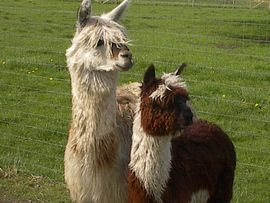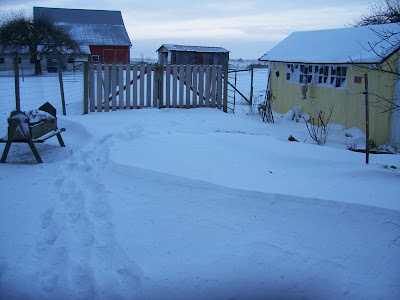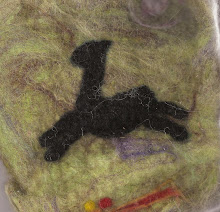 Or, how to convert a dairy barn to an alpaca barn. When we inherited the farm, the barn was sadly neglected. No, more than neglected. It had been leased to a dairy farmer who kept his dry cows here until they gave birth. Rather than cleaning out the barn, he'd just bring in more sawdust a couple of times a year. By that time, the floor of the barn was about 5 feet higher than it should have been. It took us a good two years to clean everything out and pour a cement floor in the barn before we could move the alpacas in. We chose a cement floor because it could be washed down every day. We also have many livestock mats made out of recycled tires for the alpacas to sleep on in the cold, but they never seem to prefer the mats to the floor.
Or, how to convert a dairy barn to an alpaca barn. When we inherited the farm, the barn was sadly neglected. No, more than neglected. It had been leased to a dairy farmer who kept his dry cows here until they gave birth. Rather than cleaning out the barn, he'd just bring in more sawdust a couple of times a year. By that time, the floor of the barn was about 5 feet higher than it should have been. It took us a good two years to clean everything out and pour a cement floor in the barn before we could move the alpacas in. We chose a cement floor because it could be washed down every day. We also have many livestock mats made out of recycled tires for the alpacas to sleep on in the cold, but they never seem to prefer the mats to the floor.We have our fields and barn divided into three areas. The Girls, The Big Boys, and the Little Boys. The above picture shows our three yearling boys in their field. They have access to their own portion of the barn and lean to for shelter.
This is the Big Boys domain. This is the covered area behind their section in the barn.



The first thing Alan did with the barn was cut a hole in the hayloft and build a nice stairway up to it. We didn't want to use the horizontal ladder in the background. I hate ladders. The opening provides much more light in the barn, and it's fun to be able to see what's going on up in the loft. We often times have barn owls roosting there. And, you can see our hay supply. We start out with about 200 90 pound bales of Eastern Washington orchard grass hay. Since we are down to 31 alpacas, this should last us the winter.

Each section of the barn has a waterer like this, with a heater available for when it gets below 30 degrees. We had just come through a cold spell and hadn't removed the heaters yet.

This is the Girl's catch pen. We also use it when we have a sick alpaca who we want to observe. Eve and her mom spent alot of time in this pen this Fall.

This was originally built as a maternity pen, but we like to see the alpacas deliver in the field where they are more comfortable. This pen is used when one of them has to be quarantined or is really sick. It has a radiant heater in there, too.

And here is more of the girls side. They have the most room because there are more females with crias than boys, thank goodness.

Here is the girls' entrance to the barn.

Another feeding area and where we shear. Also, it has a gate so we can use it for a catch pen or breeding pen.












































